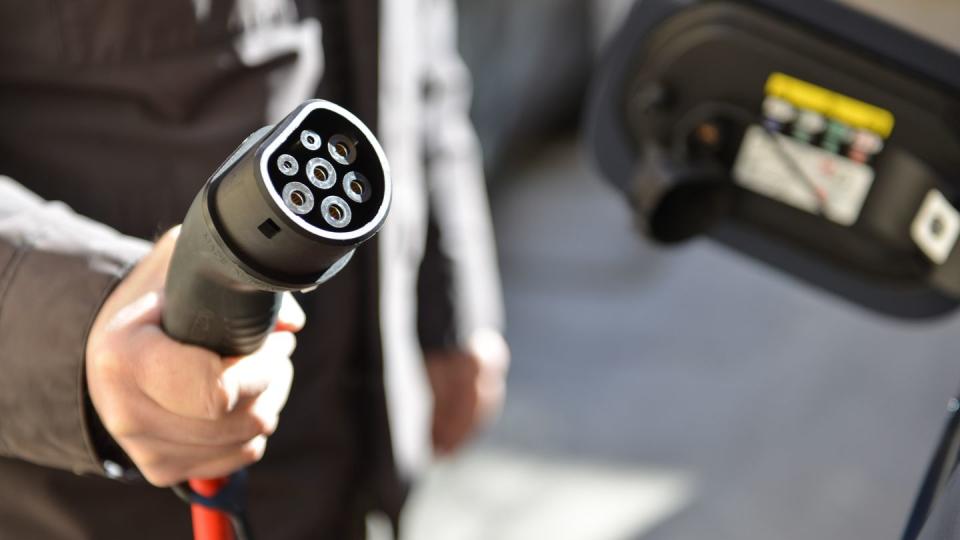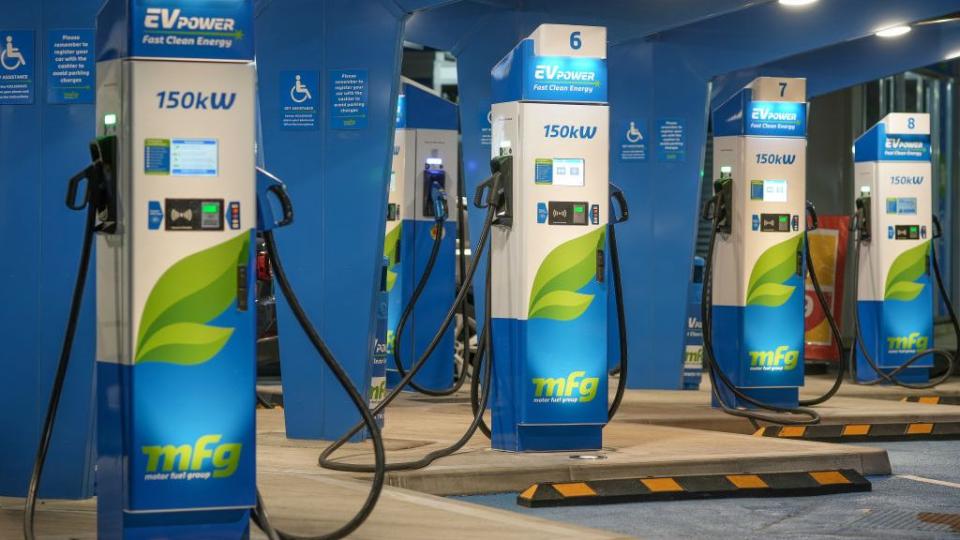What You Need to Know About EV Charging at Home

One of the best parts of owning an EV is that you can have a fueling station in the convenience of your home. If you have access to home charging, that also means you can sidestep a lot of the commotion and confusion over the availability, quality, and creativity of public charging options.
Your decision points are pretty straightforward. Home charging is a choice between Level 1 and Level 2. L1 is simple. It doesn't require special setup or come with a lot of frills. But if you decide charging at a rate of a few miles per hour just isn’t enough for you, the whole discussion shifts over to L2. At that point, you have a number of choices to make about the kind of charger you want and whether and how much to invest in electrical upgrades.
Everything You Need to Know About Level 1 Chargers at Home
L1 charging is straightforward and easy, if slow, and can be done at pretty much any home because you just plug into a regular outlet. In technical terms, it utilizes a normal household 120-volt, 15-amp receptacle, known as the NEMA 5-15. The “charger” is really just an extension cord that connects the actual charger, which is inside your car, to the wall. You can buy an L1 charger, but this is generally not necessary because most EVs come with the required cable and adapters (typically called travel chargers as they are intended to remain in the vehicle for trips). These ~1.5kW chargers are the slowest way to charge, taking at least a couple of days to get a complete charge, but may cover your daily commute overnight depending on what car you own and how far you drive. Note that L1 chargers also tend not to have any of the convenience features common in L2 chargers. The main advantage is that Level 1 charging is simple and accessible to all.
There are some for whom this slow rate of charge is more than sufficient. If you work from home and only really use your car on the weekends or for errands, you may not need to be able to fully charge your car overnight. If you intend to use your EV primarily as a commuter with a known short route, like a 5-mile drive to the train station and back during the week, but have an ICE minivan as a family hauler on the weekend, your L1 charger could certainly keep your ‘train car’ topped up. If your employer provides EV charging as a benefit and you just need a charger at home as a backup, you may rarely charge at home at all.
But if you do have a significant commute that you expect to power at home, your best option is likely to invest in an L2 charger.
Everything You Need to Know About Level 2 Chargers at Home
An L2 charger offers the speed and convenience most homeowners are looking for. For a relatively low upfront cost, L2 charging allows you the flexibility that comes with completely charging your car overnight and can offer a number of time- and cost-saving features. Not all Level 2 chargers are created equal, however, and to figure out what kind of setup makes sense for you, you’ll have to first take stock of the basic wiring in your home.

That’s because the key distinction between L1 and L2 charging is the input voltage your EV receives from your home, stepping up from 110-120 volts to 208-240 volts. In other words, instead of plugging into the same kind of outlet you use for your tea kettle or laptop–and which you almost certainly already have in your garage–for L2 charging, you need some variation of the weird outlet that you use for your washer/dryer hookup. This allows the charger power to jump from around 1.5 kW for L1 to typically between 5.8 kW and 19.2 kW. Exactly how much power you will actually be able to tap within that range depends on a combination of factors determined by your home, your car, and your charger.
If You Have a 240-volt Outlet
If you are lucky enough to have a 240-volt outlet in your garage (often for a dryer), most of the work required for L2 charging is already done. These outlets come in different styles, each with different amperage ratings to support a variety of appliances, but the most common is the NEMA 14-30, which supports a 30-amp circuit. This allows you to install a 24 amp, 5.8-kW charger (inclusive of a 20 percent safety margin) able to fully charge most midsize EVs in 13 hours, which is faster than most people need. If you are very lucky, you might find a NEMA 14-50 outlet rated at 50 amps, making it possible to fully charge in eight hours. And if your outlet is already in use for a dryer, an automatic switch would allow you to connect your EV charger and dryer, or two EV chargers, without worrying about overloading the circuit.
Finding out how much power your outlet delivers is straightforward and can be done in two steps. The first is to look at the outlet itself and match it with the appropriate NEMA outlet type to determine your amperage. See the handy chart below.

Once you know what outlet you have, confirm that you have a matched breaker in your panel. Generally speaking, if the outlet exists in your home then your main service should be able to support it with no issue. However, particularly if you are aware of any major electrical additions to your home, like a hot tub or central air conditioning, it may be wise to evaluate your total electrical use. Read on for more details on why.
If You Don’t Have a 240-volt Outlet
The reality is most homes do not have such a powerful outlet sitting idle in the garage. If that is the case, you will have to hire an electrician to handle the installation and make a few decisions about what exactly you need.
Hardwired vs. Plug-In
When taking the installation plunge, the first decision you face is whether you want to hardwire your charger or just install an outlet and plug your charger in. There is essentially no difference between the two in how the charger functions, but a hardwired charger may be marginally safer, with fewer points of failure (the outlet and plug), and also may be more aesthetically pleasing if you prefer a clean look in the garage. Installing a hardwired charger is actually also a bit cheaper, as the plug-in receptacle requires a more expensive GFCI (ground force circuit interrupter) circuit breaker and the purchase of the receptacle itself. On the flip side, it is easier to swap out or move your charger if you use the plug-in style.
How Much Power Does My Electric Car Need to Charge?
The next issue is how much power you want to dedicate to charging. Power is a function of not just the voltage of a circuit but also the current flowing through it. Current is measured in amperage, and your home gets only so many amps of electricity at any given time. While some very old homes may have less, most modern homes have either a 100- or 200-amp main service from the grid. As you can imagine, if you only have 100 amps of total service, dedicating 50 of that to continuous vehicle charging might be excessive. As explained in more detail here, unless you have a very large EV, a 30-amp charger is likely enough power to cover your needs. Stepping up from 30 to 50 amps also typically means a small increase in the cost of installation, mostly due to the larger wires required both in your home and in the charger itself. That said, there may be benefits to having a larger circuit to support a larger car (or multiple EVs) down the road, or to support later enhancements like wireless charging that may require the additional power.

 Yahoo Autos
Yahoo Autos 